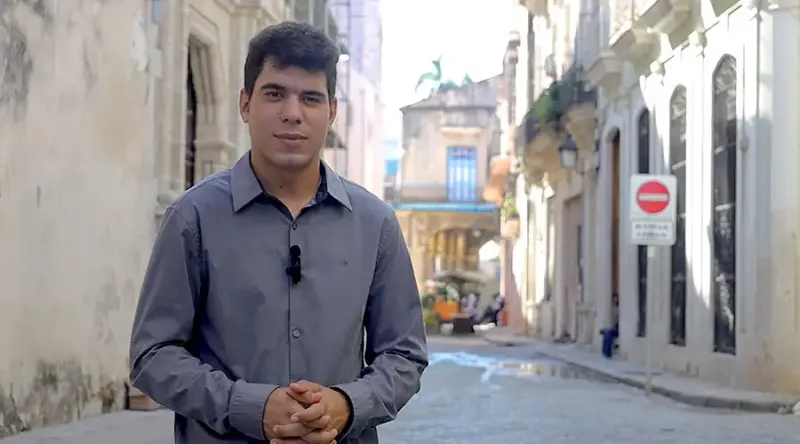
ACI Prensa Staff, Oct 19, 2023 / 18:40 pm (CNA).
Father José Filiberto Velázquez Florencio, a priest of the Diocese of Chilpancingo-Chilapa in the Mexican state of Guerrero, reported that he was attacked around midnight Oct. 18. The “motive,” he said, was his work in defense of human rights in the area.
Velázquez is director of the “Minerva Bello” Center for the Rights of Victims of Violence, an organization that provides support to the victims or relatives of those who have been attacked, disappeared, forced to move, or killed and is based in Chilpancingo.
In an interview with ACI Prensa, CNA’s Spanish-language news partner, the priest said the attack occurred when he was returning home after providing advice to students from the state of Chiapas attending the Rural Teachers College of Ayotzinapa, a town in the state of Guerrero.
In 2014, 43 students of the same school were “disappeared” in a case that shocked the world and that has never been solved. In Latin America, someone who “was disappeared” means that the person was abducted and very likely killed, whether by organized crime or by left-wing or right-wing forces.
The priest related that as he was traveling along the federal highway that connects the towns of Tixtla and Chilpancingo, he was “intercepted” by men riding a motorcycle. “First they shot at me from behind and then they damaged the tire and they chased me from the front and shot at me. Fortunately for me, it’s a miracle that the bullets didn’t hit me.”
Asked if he thought there was a connection between the attack and his work in defense of human rights, Velázquez responded: “Yes, it’s basically the motive.”
The priest noted that lately his work “has been very focused on the Sierra de Tierra Caliente region with the attacks by ‘La Familia Michoacana’ against the town of Nuevo Caracol. We have publicly denounced these situations and we have accompanied them, bringing humanitarian aid [to the affected population].”
“La Familia Michoacana” is one of the drug trafficking gangs fighting for territories in the region along with the “Cartel del Sur” (Cartel of the South) against other criminal organizations such as “Los Tlacos.”
For the priest, the “interests” of organized crime, as well as government institutions that have been infiltrated, “are affected when there is a voice that denounces injustice.”
The priest said he has filed a complaint with the attorney general’s office of the state of Guerrero, specifically in the Specialized Operational Unit for Crimes Committed against Human Rights Defenders.
Although he was offered the possibility of being transferred to another region for security reasons, Velázquez rejected the offer: “I did not accept in solidarity with the victims who cannot have that privilege of leaving their place of origin in the face of violence.” However, the priest said that the authorities will provide him with “security measures for a time.”
According to the Catholic Multimedia Center, nine priests have been murdered during the term of President Andrés Manuel López Obrador, which began in December 2018.
The list of the 50 most violent cities in the world during 2022, ranked by the Citizen Council for Public Safety and Criminal Justice, includes 17 towns in Mexico. Nine of the 10 cities that top the list are in that country.
Despite the attack, Velázquez reaffirmed his commitment to the work of defending human rights and to his community: “That commitment will continue here, along with the Masses that I celebrate in my communities and neighborhoods.”
“I’m at a shelter that provides refuge to relatives of people who come to the hospital, to migrants, to anyone who needs support. And I also live here and I will continue working here,” he assured.
This story was first published by ACI Prensa, CNA’s Spanish-language news partner. It has been translated and adapted by CNA.
If you value the news and views Catholic World Report provides, please consider donating to support our efforts. Your contribution will help us continue to make CWR available to all readers worldwide for free, without a subscription. Thank you for your generosity!
Click here for more information on donating to CWR. Click here to sign up for our newsletter.





There are saints among us. I doubt if any of them are in Rome right now.